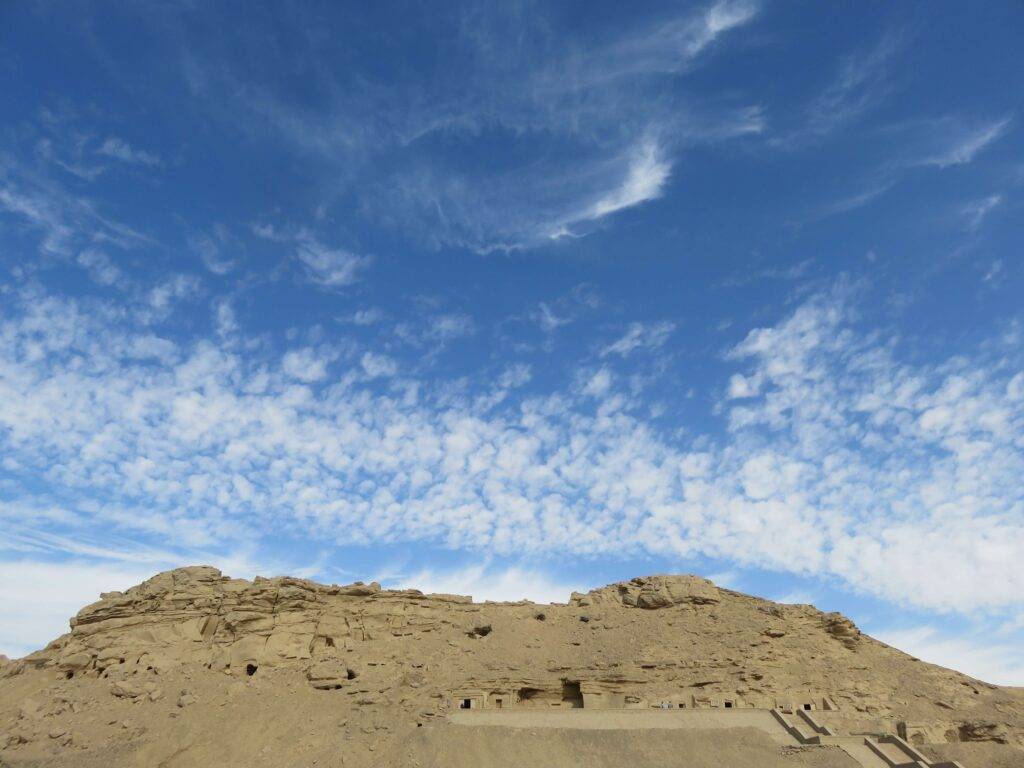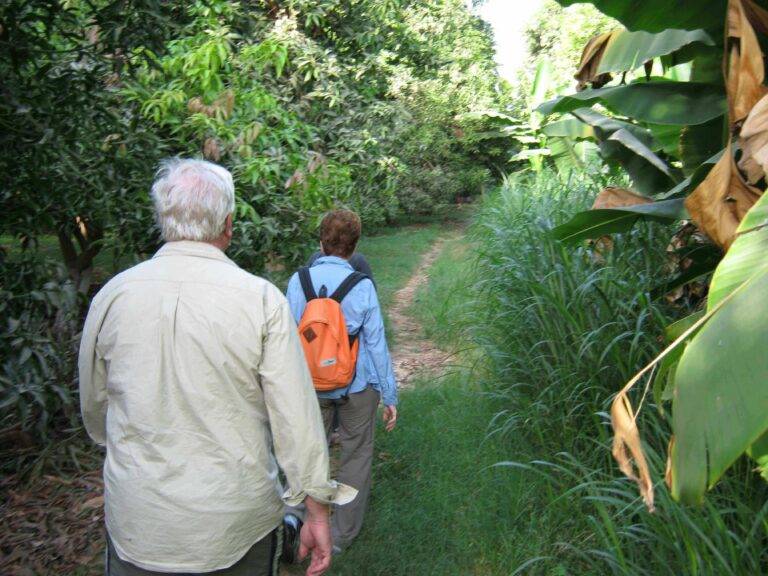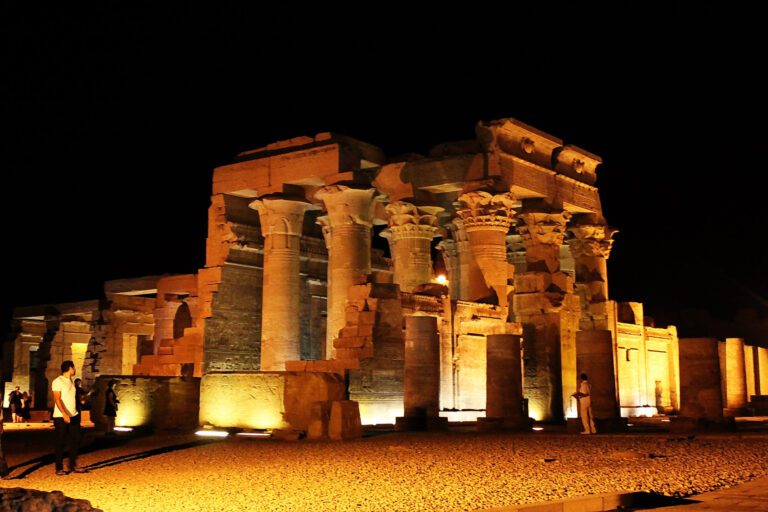• Dahabiya Nile Sailing •
Short Description: A Dahabiya Nile Cruise is the most unique, authentic and exclusive way to experience the Nile in elegance and comfort. Dahabiyas are traditional wooden sailing boats with private cabins with ensuite, originally designed to take 19th Century travellers along the Nile in comfort. For those who want to experience culture, history, and relaxation as they pass along the Nile Valley, there is no better way than a Dahabiya cruise.

Day 1 (Usually Monday)
To join the dahabiya, which is part of the Luxor governorate, we drive about an hour from Luxor to Esna.
We visit the Temple of Esna and restored caravanserai and market, then check in to the dahabiya and sail to El Hegz Village for a unique cultural experience.
Lunch and dinner are on board the dahabiya.
Day 2
Breakfast on board, sailing to El Kab.
Transfer to see the massive walls of the ancient town of Nekheb and explore the New Kingdom tombs.
Sail to Edfu, ride to visit the Temple of Horus.
Sailing with dinner and free time as you overnight on the dahabiya.


Day 3
Breakfast on board.
Visit Bisaw Island and village, join the men in their boats to share the experience of Nile fishing, walk through farms and meet the villagers.
Sailing to El Selsela ancient sandstone quarry and shrines.
Special barbeque dinner by moonlight.
Day 4
Breakfast on board.
Visit Kom Ombo temple and the Crocodile Museum.
In the nearby town of Daraw you learn how to shop like a local at the market, visit a barn to meet camels and learn about the camel trade, and visit a Nubian Town.
As we sail closer to Aswan if you wish there is an opportunity to swim or kayak.
Farewell dinner and sail to our final destination Aswan.


Day 5
Breakfast on board and check out of the Dahabiya.
We will drive to Esna.
Here we explore the Temple dedicated to the ram headed god Khnum.
The temple sits below street level within the town, as it was excavated from layers of earth.
Enjoy discovering heritage craft traditions including beautiful textiles as we visit the restored Wekalet Al Geddawi, a caravanserai, and the Ottoman era market of Al-Qissariya.
We then check in to the Dahabiya and enjoy lunch on board as we sail for about 4-5 hours to El Hegz Village.
This is an opportunity for true cross cultural exchange as we visit a local family who are excited to have visitors
from the wider world.
Your guide will translate so you can ask them questions and enhance your understanding of
village culture.
Dinner and your first night on the Nile, enjoying the comforts of the dahabiya.
At El Kab remains of ancient settlements date from about 3,000 BC (possibly centuries earlier) to Roman rule.
The site is one of the most unique in Egypt because ancient villages and cities are rarely found.
As we move inland you will see remains of the impressive mud brick walls and the long valley lined with tombs and shrines, including
temples dedicated to Nekhbet and Thoth.
We enter the decorated tombs of New Kingdom officials from the area.
We board the dahabiya for lunch and sail towards Edfu.
Ride to the imposing Temple with its grand spaces and
many hieroglyphic inscriptions.
View Tell Edfu to the West of the temple, which includes houses dating from the Old to New Kingdom.
If time allows we also stroll through the local market.
We sail again, time to relax with dinner, and drift into dreams as you are now becoming part of the rhythms of the Nile.
Stepping off the dahabiya at Bisaw Island and village we take a leisurely walk through a farm, meet some of the
women and children and learn how the unique sun bread is baked in homes here.
We are welcomed by the local fishermen to their boats, learning of the skills of these men who live in harmony with the Nile.
Fish caught can be enjoyed as part of dinner that evening.
Sail to El Selsela where we take a short walk parallel to the Nile to visit shrines and a massive quarry.
Large amounts of sandstone was quarried here for temple building in Thebes (Luxor).
Cut into the rock are the speos (chapel) of Horemheb with its sanctuary containing rock shrines and various stelae and inscriptions.
The huge quarry gives context to how much building material was sourced from this area.
There is also an area of sand here where children (and children at heart) can slide and play.We sail until it is time for an atmospheric barbeque dinner by moonlight, and another tranquil night on board.
A short walk from the dahabiya dock, the Temple of Kom Ombo is dedicated to the crocodile-featured god Sobek and the god Horus.
The connection to the power of the Nile is unmistakable as you look towards the temple.
We also visit the Crocodile Museum which includes some impressive mummified crocodiles.
In nearby El Daraw we plan dinner for that night and you learn how to shop Egyptian style, then try your new skills in the market shopping for ingredients for dinner.
We also visit a camel barn to learn about these fascinating animals and about the camel trade.
We visit a Nubian Town. From about 7,000 BC, communities evolved from African Nile Valley civilisations to form the Nubian, Ancient Egyptian and Kushite civilizations.
There are several Nubian communities near Daraw.
Nubian civilization is one of the oldest in the Nile River valley.
Nubians are a distinct ethno-linguistic group indigenous to southern Egypt and northern Sudan, but Nubians in Egypt who were displaced by the construction of the High Dam near Aswan now mostly live north of Lake Nasser.
Although Nubians are historically and culturally distinct from other Egyptians, they have long been interconnected with Egypt. While many Egyptian pharaohs colonized Nubia at various times, Nubian pharaohs from the Kingdom of Kush ruled Ancient Egypt in the 7th Century BC.
As we near Aswan you have the opportunity to swim or kayak.
If you wish to kayak please advise us two days before the dahabiya tour begins so we can be sure to have kayaks available.
We set sail on the final stretch of the dahabiya cruise, with lunch and time to reflect on your dahabiya experience.
By the farewell dinner we are sure you will be wanting to return to see more of Egypt, and wishing this was not your last night on board the dahabiya.
Lying in Abu Simbel town, 3 hours drive (each way) from Aswan to the south about 230 km (140 mi) southwest of Aswan, part of the UNESCO Nubian world heritage sites including two massive rock-cut temples dating back to Ramses II of the 19th dynasty, Abu Simbel temples were relocated by archaeologists as construction of the dam began in 1960 in a rescue operation .
will give you more insights to the multifaceted history of this area, and of how monuments and edifices were made.
| Dahabiya Tour Detailed Quote |
|---|
| USD 705 Per Person in Double Cabin |
|
| USD 248 Per Suite Per 4 Nights |
|
| USD 540 Per Person Per Cabin Per 4 Nights |
|
| NOT INCLUDING |
|
| NOTES |
|
© Dahabiya Nile Sailing Egypt 2024